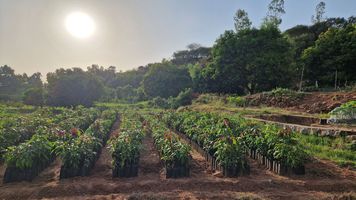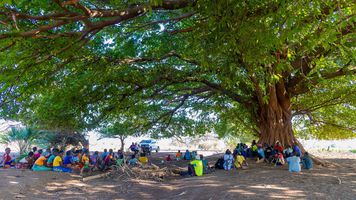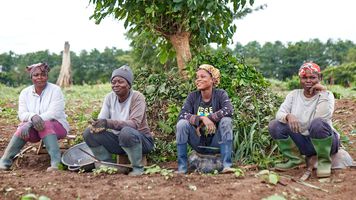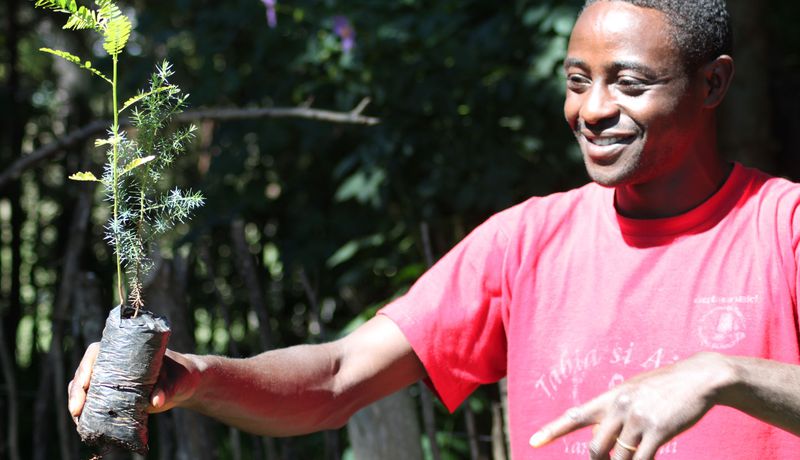Climate Impact Partners is working with Microsoft to support two of the highest quality carbon removal projects in the world – designed and delivered in close collaboration with local communities to ensure they deliver not only for the climate, but for people too.
We have a long history of working with Microsoft, having collaborated with them since 2012 when the company first achieved carbon neutrality, offsetting its Scope 1, Scope 2, and business air travel emissions through high quality carbon projects around the world. Over the past decade, we have flexed our approach to match Microsoft’s increasing ambition, which culminated in a sector-leading target to be carbon negative by 2030.
“We value our long-term relationship with Climate Impact Partners and in particular the collaborative way they work with project implementation partners. Their due diligence process coupled with on the ground project expertise built over many years helps us select and support the highest quality carbon removal projects,” said Elizabeth Willmott, carbon program director at Microsoft.
1. The CommuniTree Reforestation Project, Nicaragua
This project is a close partnership between Climate Impact Partners and the Arbor Day Foundation. Managed on the ground by Taking Root, it is the largest reforestation initiative in Nicaragua. The project uses reforestation to create long-term income opportunities for farmers who are most vulnerable to the effects of climate change.
Farmers can receive direct payments for growing the forest over a 10-year period, creating new sources of income for families.
It helps farming families to grow native tree species and build forest-based enterprises on underused farmland that has been historically deforested, creating sustainable livelihoods for the short and long term.
For reforestation to be a successful solution to climate change, trees must benefit and be valuable to local communities for the long term. The project is specifically designed so that the forests improve the lives of Nicaraguan farmers traditionally earning less than $2 per day. It does this by:
Creating new forms of income for farmers including:
- Direct farmer payments for growing the forests over a 10-year period, which amount to at least 60% of the carbon credit sale price.
- Helping farmers build forest enterprises by creating and selling products from the forests they are growing, such as high value woodcrafts, biochar, and sustainable shade-grown coffee.
Generating additional benefits for farmers and their communities to prosper, including:
- Large-scale employment opportunities by creating thousands of local seasonal jobs to support the operations of the program such as seed gathering, nursery building, and tree planting.
- Climate adaptation and resilience provided by the forests helping mitigate the risk to farmers’ crops from extreme weather events caused by climate change such as droughts, flooding and increased temperatures.
- Income consistency as the activities from growing the forests take place in farmers’ off-season, helping farmers get a consistent source of income during the times of the year when it is most needed.
The project team is made up of cross-disciplinary local and international experts in forestry, business, smallholder economics, computer science, and remote sensing, and the project has been used as a best practice reforestation model by organizations including the United Nations and European Union.
Watch this video, to see how the project is transforming life for local farmers, the community and the environment.
The results
- Over 10 million native trees have been planted to date across more than 6,150 hectares, helping make the local communities more resilient, regenerate biodiverse forest ecosystems and wildlife habitats, and sequester over 1.5 million metric tons of carbon dioxide.
- Over 1,350 farming families are participating in the project, including over 200 women farmers, helping them build thriving forest enterprises with over $6.9 million (USD) being paid directing to farmers.
- Thousands of local jobs generated for non-land-owning farmers, bringing a consistent income source to some of the most vulnerable communities in the region.
2. The Kenya Community Reforestation project
A century ago, this landscape was dense forest. Now, local farmers are counteracting the devastating effects of deforestation - erosion, famine, droughts and floods by planting millions of trees.
Under traditional practices, farmers clear trees to increase available agricultural land. This project organizes hundreds of small community-based, tree-planting initiatives on land owned by smallholder and subsistence farmers.
This helps to break the local cycle of deforestation, drought, and famine by reducing erosion, stabilizing and enriching the soil, and providing shade. Once mature, the trees provide other benefits, including edible fruits and nuts, medicines, windbreaks, firewood, and timber. In addition, it improves lives for local people through education and training and additional sources of income.
Case study: Anastasi Ngugi
On her small farm, nestled into the side of Mount Kenya, Anastasia Ngugi has been planting tea and coffee for decades; since 2016, she has also been planting trees. Her farm is small, and mostly dedicated to her main crops, so she started planting grevillea, macadamia, and avocado trees around the boundary.
Farmers like Anastasia plant trees to receive carbon income. In just a couple of years, Anastasia has seen improved crop yields, carbon income and access to an improved cookstove. She now uses less fertilizer and firewood, inhales less smoke while cooking, and lives on a more beautiful and productive piece of land. She’s accomplished this all while becoming a more engaged, vibrant, and connected member of her community.
"…earlier on I was not as vibrant as I am now. I love making friends and not just friends but those that are very enthusiastic [about] tree planting and working together to improve this climate of ours."
The results
To date the 9,000 groups have planted over nine million trees, helping achieve Kenya’s goal of increasing forest cover from 7.4% to 10% of total land area.
You can see afforestation in action in this video showing the projects impressive growth around Mount Kenya.
"It’s exciting to be working alongside a company like Microsoft who are really raising the bar on climate ambition and setting the standard for others to follow. At the same time as investing in carbon removal projects, they are driving carbon reductions throughout their organisation and supply chains. Working closely with them allows us not only to have positive impact through their direct actions, but to share their learnings and experience to help others deliver maximum positive climate impact,” said Saskia Feast, Managing Director of Global Clients Solutions at Climate Impact Partners.
Since 2012 We have worked with Microsoft to deliver climate action
Latest News

COP30:Coalition to Grow Carbon Markets Launches Shared Principles
The Coalition to Grow Carbon Markets has launched it Shared Principles on the use of high integriity carbon credits.
Read more
Farmer-led carbon reduction project to transform rural livelihoods for 240,000 Zambians
A new community-led carbon initiative has launched in Zambia which is set to remove up to 2 million tonnes of CO₂ annually by 2030.
Read more
Climate Impact Partners Named Best Offset Retailer for 13th Time in Largest-Ever Environmental Finance Voluntary Carbon Market Awards
Recognition underscores Climate Impact Partners’ leadership in the carbon markets and partnership-first approach to delivering high-integrity climate impact.
Read more















